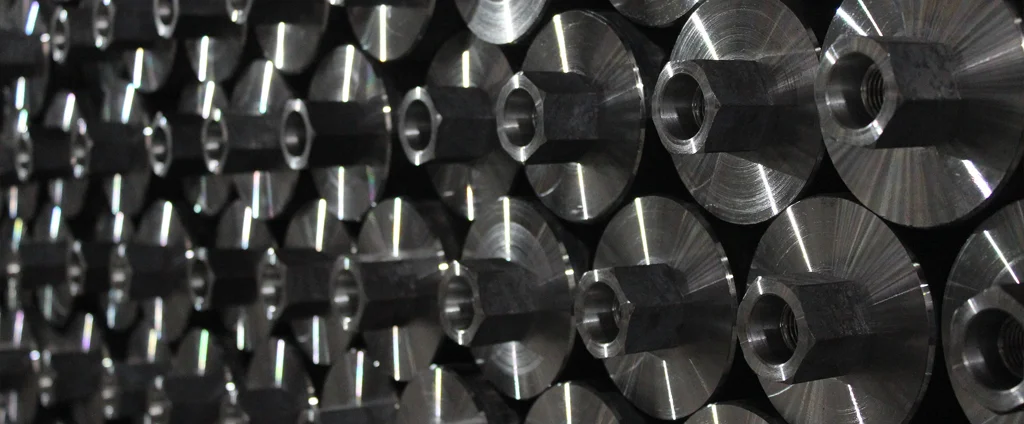SAE/AISI 1145 Carbon Steel (UNS G11450)

SAE/AISI 1145 is a medium carbon steel that offers excellent durability, strength, and machinability, making it ideal for a wide range of industrial applications. Its ability to withstand wear and tear, combined with ease of machining, positions it as a reliable choice for machine parts, automotive components, and structural elements.
| Chemical Composition | ||
|---|---|---|
| Element | Min | Max |
| Iron | 98.51% | 98.98% |
| Carbon | 0.42% | 0.50% |
| Manganese | 0.60% | 0.90% |
| Phosphorous | —— | 0.04% |
| Sulfur | —— | 0.05% |
The following table provides a list of SAE/AISI 1145 properties in both SI and US customary/Imperial units.
Click on the button to switch between Metric and Imperial units.
| Physical Properties | Metric |
|---|---|
| Density | 7700 - 8030 kg/m3 |
| Mechanical Properties | Metric |
| Tensile Strength (Ultimate) | 585 MPa |
| Tensile Strength (Yield) | 450 MPa |
| Young’s Modulus (E) | 190 - 210 GPa |
| Bulk Modulus (K) | 140 GPa |
| Shear Modulus (G) | 80 GPa |
| Elongation at Break | 12% |
| Reduction of Area | 35% |
| Poisson’s Ratio (ν) | 0.27 - 0.30 |
| Brinell Hardness | 163 |
| Thermal Properties | Metric |
| Thermal Conductivity | 52 W/m·K |
| Specific Heat Capacity (Cp) | 470 J/kg·K |
| Coefficient of Thermal Expansion (αL) | 1.2×10-5 1/°C |
| Electrical Properties | Metric |
| Electrical Conductivity | 4.1×106 S/m |
| Electrical Resistivity | 2.4×10-7 Ω·m |
The values in this table are approximate and can vary depending on various factors such as the specific manufacturing process and heat treatment applied to the alloy.
Advantages & Disadvantages of 1145 Carbon Steel
| Advantage | Disadvantage |
|---|---|
| Strong and durable | Susceptible to rust and corrosion |
| Easy to machine | Not as strong as high-carbon steels |
| Can be heat treated to improve properties | Not as ductile as low-carbon steels |
| Low cost |
Applications of 1145 Carbon Steel
SAE/AISI 1145 carbon steel is used in numerous applications that require high strength, durability, and resistance to wear. Common uses include:
- Machine parts: Often used for components such as gears, shafts, and bearings due to its strength and durability. It can withstand wear and tear while being easy to machine.
- Tools: Commonly used for tools like wrenches, hammers, and screwdrivers because it resists wear and tear and can be easily sharpened for durability.
- Structural components: Suitable for heavy-duty structural applications like bridges and buildings, offering strength, durability, and easy weldability.
- Automotive parts: Widely utilized in automotive components such as axles, gears, and crankshafts, where its durability ensures reliable performance in demanding environments.
- Agricultural equipment: Used in plows, harrows, and combines, providing strength to withstand the daily wear and tear in agricultural operations.
